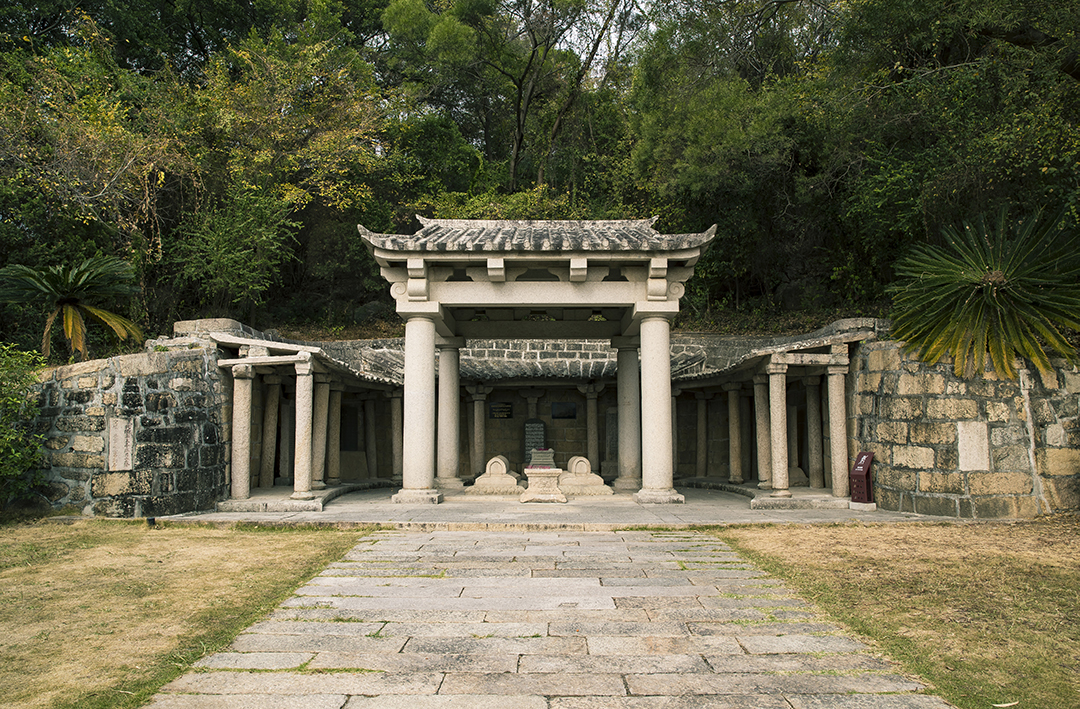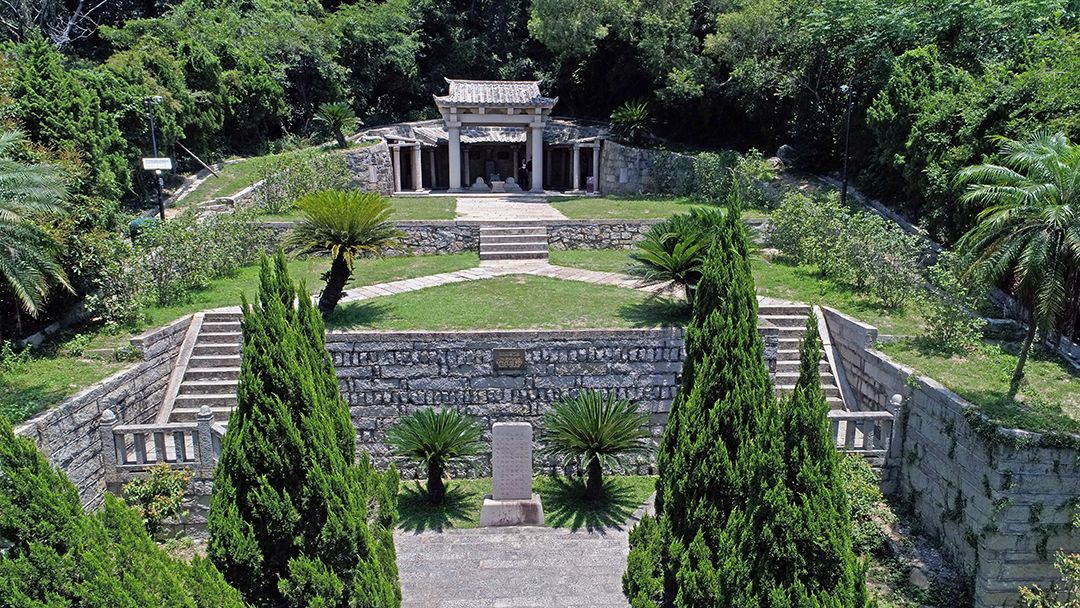
The Islamic Tombs constitute a representative component that highlights the Multi-cultural Communities at the emporium of world maritime trade. The Islamic Tombs are located in the southern foothills of Lingshan Mountain, two kilometers from the east gate of the city of Quanzhou. They are believed to be the final resting places of two Muslims who came to Quanzhou in the 7th century. Major renovations were undertaken on the tombs in 1322. Facing southward, the tombs are built into the mountainside. The main layout is a half-moon shaped corridor encircling the two stone tombs. The stone tombs are at the center of the site, typical of Quanzhou Muslim tomb design. On the ground lying next to one another from east to west, two rectangular tomb-cover stones carved from granite have survived intact to the modern day. The tomb chambers are located directly below the tomb-cover stones. As per Muslim burial traditions, the side facing Mecca to the west. A stone pavilion stands over the tomb-cover stones. The west, north and east sides of the site lean on a stone retainer wall in the shape of a half-moon that curves into the mountain side. Against the retainer wall is a curved stone corridor encircling the tomb. The stone corridor is styled to imitate a wooden beam-and-pillar structure, and has nine bays on the facade; its architectural elements include the foundation, pillars, corbel brackets, beams and square columns, all carved out of stone. Below the curved corridor and in the middle of the retainer wall, there are seven inscribed steles from different dynastic eras. One of those, erected in 1322, is a stele recording the concerted efforts of Quanzhou’s Muslim community to renovate the tombs. Another stone stele, erected in 1417, records that renowned Ming Dynasty navigator Zheng He stopped here for an incense offering ritual during his voyage to the Western Oceans.

 闽公安备35050302000734
闽公安备35050302000734
